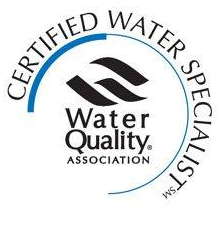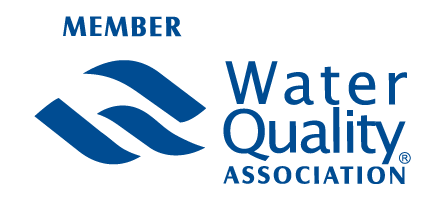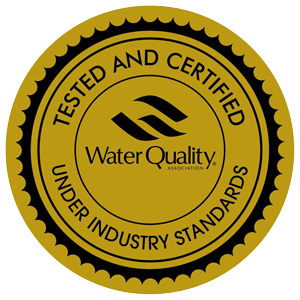Home |
Residential |
Water Softener with GAC & KDF |
Water Softener with GAC & KDF
|
How They Work To explain why water softeners are beneficial and how they work, one needs to understand the differences between hard and soft water. It is presumed in this document that the water you are using meets all health regulations and is known to be safe. What is Hard Water? Hard water contains large amounts of calcium and magnesium two minerals that the soapy scum on glasses and lime residue on bathroom fixtures. While suitable for drinking and gardening, hard water can cause mineral build-up in water heaters, pipes, dishwashers and shower heads, reducing its flow. Soap and shampoo’s ability to lather is reduced, and laundry becomes stiffer and duller in appearance. As Table 1 shows, water hardness is measured with five different classifications and can be expressed in mg/litre or parts per million (ppm) or grains per gallon (gpg).
Sources of Hardness Water's hardness is determined by the concentrations of multivalent cations in the water. Multivalent cations are cations (positively charged metal complexes) with a charge greater than 1+. Usually, the cations have the charge of 2+. Common cations found in hard water include Ca2+and Mg2+. These ions enter a water supply by leeching from minerals within an aquifer. Common calcium-containing minerals are calcite and gypsum. A common magnesium mineral is dolomite (which also contains calcium). Rain water and distilled water are soft because they also contain few ions. The following equilibrium reactions describes the dissolving/formation of calcium carbonate scales: CaCO3+CO2+H2O=Ca2++2HCO3−Calcium carbonate scales formed in water-heating systems are called lime scale. Calcium and magnesium ions can sometimes be removed by water softeners. Table 1 Water hardness classifications
How Does a Water Softener Work? A water softener uses a media that serves to exchange "ions" of calcium and magnesium with sodium and potassium. This occurs in four steps:
Automatic water softeners are usually programmed to recharge at specific times that will not disrupt the occupants. It is more water-efficient to have a metered model that will regenerate only when required. What are The Benefits of a Water Softener? A water softener reduces water hardness, making it easier to shower and clean fabrics and dishes. With soft water, less soap is needed for bathing and laundry. Skin feels cleaner and clothing softer. Pipes, fixtures and appliances have less scale build-up. With less build-up, appliances can operate efficiently. Mineral-derived odours may be reduced; and, there are fewer deposit stains on bathroom fixtures.
Water Softening is the reduction of the concentration of calcium, magnesium, and certain other metal cations in hard water. These "hardness ions" can cause a variety of undesired effects including interfering with the action of soaps, the build up of lime scale, which can foul plumbing, and galvanic corrosion. Conventional water-softening appliances intended for household, commercial & industrial use depend on an ion-exchange resin in which hardness ions are exchanged for sodium ions. Water softening is desirable where the source of water is hard. Our all water softener with GAC & KDF also removes chlorine, Chloramines, iron, Hydrogen Sulfide, Odor, Taste & potentially toxic metals ions such as lead and copper. |
 |
 |
 |
All water softeners are equipped with fully automatic metered & timer control valve & available in all sizes. Warranty: Electronics 5 years. Media, fiber glass tank & brine tank 15 years.
KDF Media for Removal of Chlorine, Iron, Hydrogen Sulfide, Heavy Metals & Bacteria
KDF 55 and KDF 85 Process Media can remove up to 99% of water-soluble lead, mercury, nickel, chromium, and other dissolved metals. All KDF Process Media forms are effective in controlling the buildup of bacteria, algae, fungi and scale, making them ideal for use in GAC beds, ion exchange resins, carbon block filters and inline carbon filters. Wherever our Media are used, they can eliminate the need for costly, and sometimes harmful, chemical treatments.
KDF 55 Medium Designed specifically for removing or reducing chlorine and water-soluble heavy metals. It controls scale, bacteria and algae, even in hot water. The process medium received NSF International Certification and is certified by NSF to NSF/ANSI Standard 42 – Drinking Water Treatment Units – Aesthetic Effects. This medium is also in compliance with California’s Health and Safety Code Section 166875 (or commonly known as AB1953) and Vermont Act 193.
KDF 85 Medium Removes or reduces iron and hydrogen sulfide from municipal or other water supplies. Also controls scale, bacteria and algae.
KDF-F (Fines) Designed to remove chlorine and control bacteria when incorporated into carbon blocks as well as into other matrix-type filters.
KDF-C (Coarse Mesh) Granules are used for removal or reduction of soluble heavy metals and chlorine. For use when less pressure drop is required.


KDF Process Media vs. Activated Carbon
|
|
KDF Media |
Activated Carbon |
|
Life |
More than 6 years* |
Only 6 to 12 months |
|
Bacteria and Algae |
Controls Both |
Permits Growth |
|
Disposal |
Recyclable |
Hazardous Waste |
|
Mechanism |
Oxidation/Reduction |
Adsorption |
|
Lb/cu ft |
171 |
35 |
|
Contaminants Eliminated |
Inorganic |
Organic |
|
|
||
What about KDF Process Media and RO, DI and IX systems?
Reverse Osmosis (RO), Deionization (DI) and Ion Exchange (IX) systems benefit from the use of KDF Process Media because our Media allow these systems to tend to their strengths. Our Media protect RO systems from chlorine degradation and bacterial contamination, extending the life of the systems' membranes. KDF Process Media protect expensive IX systems from becoming fouled with chlorine, algae, fungi and bacteria. Less fouling, longer life and reduced maintenance, all combine for lower costs.
KDF Process Media vs. Silver-Impregnated Carbon
|
|
KDF Media |
Silver-Impregnated |
|
Life |
More than 6 years* |
Only 6 to 12 months |
|
Bacteria and Algae |
Controls Both |
Permits Growth |
|
Disposal |
Recyclable |
Hazardous Waste |
|
Mechanism |
Oxidation/Reduction |
Adsorption |
|
Heavy Metals |
Yes |
No |
|
pH |
6.5 to 8.5 |
Sensitive |
|
Use |
POU/POE, Industrial, Commercial |
Home Water Filter Products |
|
US EPA Registration |
Not Required |
Required |
|
|
|
|
Download Fleck Control Valve Brochure
Download Autotrol Control Valve Brochure
Download KDF Process Media Brochure
Download Water Softener with GAC & KDF Brochure

 (905) 607-5999
(905) 607-5999 

























